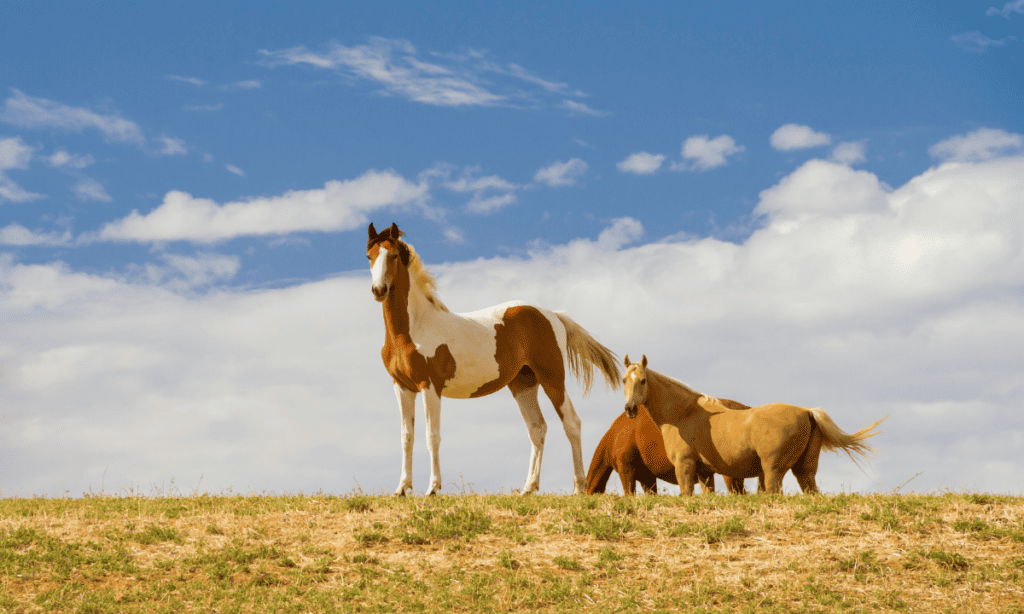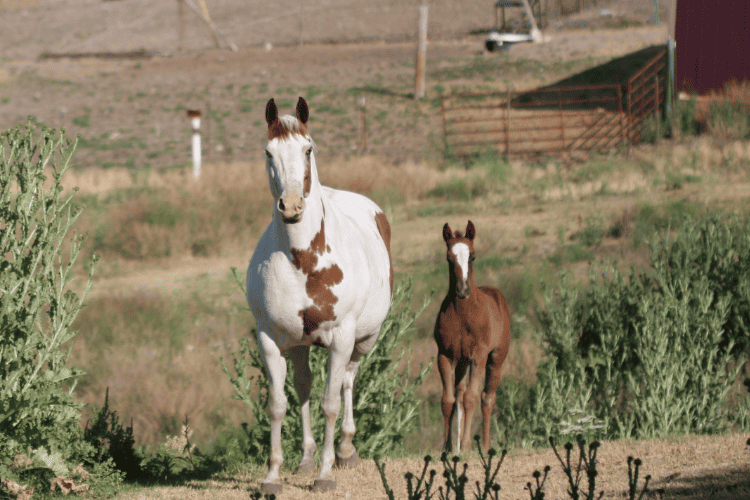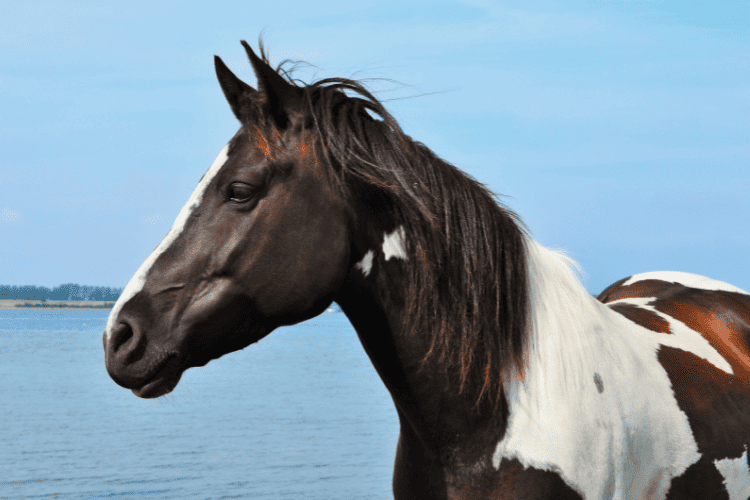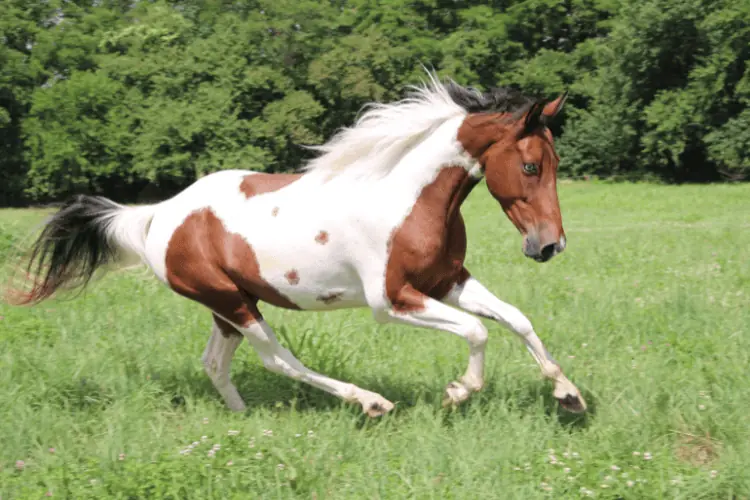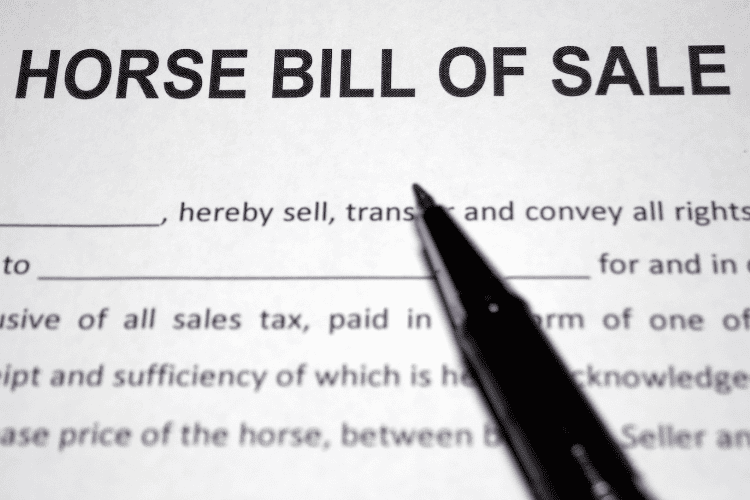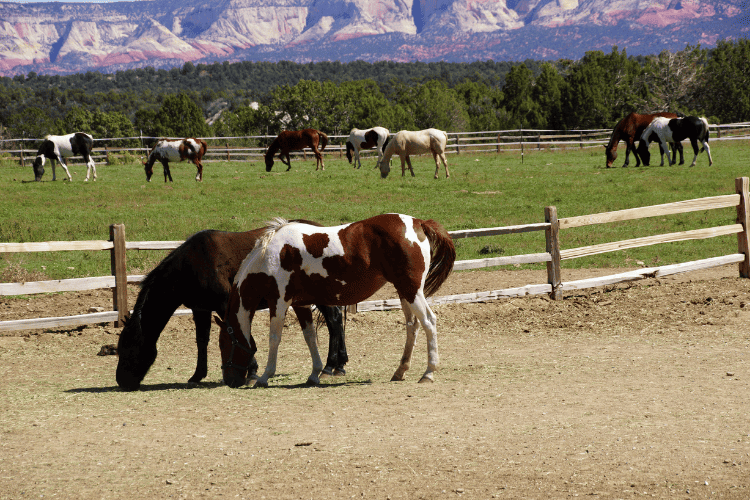- Best Antibiotics for Horse Wounds: What to Expect When Your Horse Has an Injury - September 20, 2023
- Bronco vs Mustang Horse: Are They the Same? - September 8, 2023
- Thoroughbred vs Quarter Horse - September 8, 2023
If you’re looking for the perfect type of horse breed that would complement your temperament and taste, maybe you’re dealing with the same dilemma as many others: Pinto vs Paint Horse. One of my friends and clients recently asked me to help her decide on one of these two, as well, and I can understand how intricate and confusing this can be.
What many people don’t understand is that whereas the Paint Horse is a proper breed based on blood lineage, the term “pinto” indeed refers only to a specific color pattern that appears on horses of various breeds.
That means you can actually have both in a single animal. Still, there are many criteria to consider before you settle on this choice. This comparison should make it all clearer.
Bottom Line Up Front
Paint horses, with their distinct bloodlines and markings, are part of a specific breed recognized by organizations like the American Paint Horse Association, while Pintos refer to horses displaying spotted coat patterns.
Main Differences Between Pinto vs Paint Horse
The main differences between Pinto vs Paint Horse are:
- Pinto refers to a coat pattern, whereas Paint Horse is a proper horse breed.
- Pinto body build can range from dwarf to tall, whereas Paint Horse is typically a medium-sized animal.
- Pinto can be less expensive and demanding to groom and breed, whereas a Paint Horse can be relatively demanding.
- Pinto horses can differ in temperament based on the actual breed, whereas with Paint Horse, you can rely on a calm, friendly, and easy-to-train nature.
Key Characteristics: Pinto vs. Paint Horse
Whether you’re primarily focused on the horse’s physical attributes, nature, and suitability for a certain use, or you’re just looking for more details on Pinto’s and Paint Horse’s origin, all the information you need is below.
Pinto vs. Paint Horse Characteristics Summary
| Characteristics | Pinto | Paint Horse |
| Aesthetics | Characteristic white & brown or black & white spotted coat patterns. Various lengths of mane. | Both pinto coat patterns and solid colors. Medium-length mane. |
| Body build | From miniatures to tall based on the selected breed. | Medium-size equines with robust hindquarters and broad chests. Slightly shorter body. |
| Genetics | Occasional genetic disorders (lethal white syndrome). Other characteristics are individual for each breed. | Lethal white syndrome and deafness. Otherwise, good health and life expectancy (30 or even up to 40 years). |
| Temperament | Varies greatly depending on the actual breed of your choice. | Calm, social, easy-going, cooperative, and easily trained. |
| Common use | Almost unlimited options based on the breed you pick. | Show jumping, cattle, barrel racing, western pleasure, combined, etc. |
| Price and requirements | Some pinto-colored breeds can be undemanding and suitable even for beginners. | Ideal for equestrians with at least basic experience. Mid-range price. |
| Origins | North America. The official association was established in the 1960s. | Pintos were presumably intentionally bred for thousands of years in ancient cultures around the world. |
Aesthetics
A pinto horse (in Britain, as I’ve learned during my recent visit, often referred to simply as “colored”) is characterized by a coat with large patches of contrasting colors. Typically, it is light-to-dark brown on a white background (also known as tobiano) or white on a brown base (called overo). However, we also recognize a mix known as tovero and a few other less common variations.
The pinto patterns can appear on different breeds of horses, including Gypsies, American Saddlebreds, or Miniature Horses. Some breeds (e.g., Spotted Saddle Horse or Spotted Draft Horse) are even exclusively “pinto.”
Last but not least, a pinto pattern is also pretty typical for a Paint Horse breed, which quickly brings us to the most important takeaway of this comparison: You don’t really have to decide between these two since you can simply have a Pinto Paint Horse.
However, a Paint Horse does not have to be pinto since this breed also appears in solid or almost-solid colors. (Check our horse colors guide for more details on this topic in general).
Body Build
Size and body build are probably the most prominent differences between Pinto and Paint Horse, so it will likely be a breaking point for you, too. A Paint Horse is typically a medium-sized animal with a standard height between 56 and 62 inches and a weight ranging from 470 to 600 kg.
If you compare these horses with, for example, Shire horses, they appear to be somewhat shorter. Their wide chest and dominant quarterbacks make them similar to American Quarter Horses, although animals with a few Thoroughbred genes can also be visibly taller.
If you choose a Pinto horse, your options regarding the animal’s body build are much broader since you can choose from a vast array of breeds of different sizes. Some of the most common pinto-colored horses are, for example, miniatures with a height just a little above 40 inches (or even less).
There are also Pinto Arabians, smaller but powerful and resilient animals; Pinto Oldenburgs, tall horses known as excellent jumpers; or even Pinto Draft horses that can be utilized in many different scenarios.
Genetics
Pinto horses may come from very different breeds, meaning they don’t necessarily have a common genealogical root despite their visual similarities. Therefore, if you plan to decide on your new horse based on its genes and predispositions, you should focus on the characteristics of the breed you’re eying.
American Paint Horse, which is often distinguished particularly by its pinto patterns, is considered highly resilient, strong, and healthy in terms of genetics. They can also attract you with their long lifespan (learn more about the horse lifespan in general) – some animals of this breed are known to live up to their forties!
However, if you plan to breed these horses, you should also know they are somewhat prone to the so-called lethal white syndrome (LWS). It is related to a recessive gene occurring in the frame overo patterned horses. If a foal is born homozygous for this gene, it will pass shortly after birth. Luckily, genetic tests allow us to avoid problematic breeding.
Besides that, Paint Horses can also be at risk of deafness – particularly animals with specific coat patterns and blue eyes.
Temperament
Whether you’re looking for a calm and obedient horse or you dare to tame a more wild and competitive animal instead, you can easily find a pinto-colored breed that would suit your expectations. However, if you’re looking particularly for a peaceful, relaxed, and easy-to-train horse, Paint Horse is a safe choice. This breed is praised for its friendliness, affectionate nature, and effortless communication.
When someone asks me to recommend a breed for an inexperienced rider who seeks a smooth and safe experience, I often point them straight toward Paint Horse (check out, for comparison, which are some of the worst breeds for beginners).
But don’t expect these loyal and reserved horses to be slow or lazy. In fact, Paint Horses are among the most energetic and agile horses I’ve trained. If you love long, adventurous rides, they will make great companions. Moreover, they do very well in all different types of climates.
Common Use
Paint Horse is a great companion for all different activities and environments thanks to its easygoing nature. Here are just a few of its common uses:
- Show jumping
- Cattle herding
- Barrel racing
- Combined riding
- Western pleasure
- Reining, etc.
Pinto horses can, of course, also be used in all the activities mentioned above, depending on the actual breed of pinto you acquire.
However, there are some situations when a specific type of pinto horse can be even much more suitable than a classic Paint Horse:
- Cart or sleight driving
- Dwarf guiding horse for blind people
- Miniature horse shows
- Children companions
- Specific breed competitions and races, etc.
To summarize it, Paint Horse is undoubtedly a versatile animal that can suit the needs of many different equestrians. However, pinto horses can be even more universal and fit some specific uses where Paint Horses are not advisable.
Price and Requirements
Owning a horse is worth every penny. But if you want to be responsible, a realistic consideration of all the expenses and requirements related to the horse of your dreams is surely a must. Paint Horses typically cost between $5,000 and $10,000 based on their individual qualities, age, level of training, and whether the equine is APHA-registered or not.
If you’re purely after the pinto coat pattern, you can certainly find less financially demanding options (for example, miniature-breed horses can cost less than $2,000). On the other hand, a good Anglo-Arabic pinto or a pinto-colored Thoroughbred can cost you even more than $10,000 (learn more about how much does a horse cost).
The same applies to the general demands related to the day-by-day care for these horses.
Whereas Paint Horses, regarding their demands, stand somewhere in the middle, pinto horses can be, based on their actual breed, either undemanding and suitable even for people with limited financial and material resources or demanding and fit only for seasoned experts with generous premises.
Origins
Paint Horses’ origins can be traced to North America, where they were bred from Thoroughbreds and Quarter Horses to create a versatile, strong, and agile companion for all different types of equestrians.
Paints were popular among ranchers, Native Americans, and settlers for many decades before becoming an officially registered and standardized breed under the American Paint Horse Association (APHA) established in 1962.
Logically, the history of Pinto horses is more complicated and diverse since they represent a wide array of different breeds from all over the world.
However, looking at the origin of the expression “pinto,” in general, we can come to the conclusion that it’s probably derived from the Spanish word “pintado” (“painted”), which was widely used in relation to spotted horses at least since the 17th century.
Moreover, based on archaeological findings and artifacts, historians believe that the spotted coat was a popular and sought-after horse trait already in Ancient Egypt. It’s, hence, nowadays believed that pinto horses were intentionally bred by our ancestors for thousands of years.
FAQs
Answer: Yes! In fact, most of the Paint Horses sport a pinto-patterned coat. However, there are also solid or almost-solid-colored Paint Horses. Some of the common colors include Chestnut, Buckskin, Cremello, and Gray.
Answer: Not really. The American Paint Horse Association (APHA) is today the world’s second-largest equine registry, with over a million registered animals. Considering the fact that pinto characteristics can occur in many different horse breeds, too, pintos are certainly even more common.
Answer: Paint Horses are considered extremely smart and reasonable, which demonstrates in their calm and reliable nature, good predispositions for different types of training, and friendliness. Regarding Pinto horses, it’s fair to say that the color characteristics are not related to the temper or intelligence of a horse, so you have to focus on the breed itself instead.
Other Similar Horses
Still not decided between Pinto and Paint Horse? Here are our guides to some other horse types and breeds you may want to consider:

